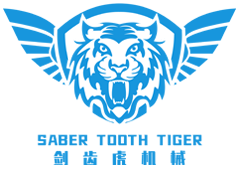-
Revolutionizing Electrical Manufacturing: The CNC Busbar Bending and Punching Line
In the realm of electrical manufacturing, the CNC busbar bending and punching line represents a significant advancement in the production of electronic and electrical products. These automated systems streamline the process of shaping and processing busbars—conductive bars used to distribute electrical power—enhancing both efficiency and precision in manufacturing. The CNC (Computer Numerical Cont
In the realm of electrical manufacturing, the CNC busbar bending and punching line represents a significant advancement in the production of electronic and electrical products. These automated systems streamline the process of shaping and processing busbars—conductive bars used to distribute electrical power—enhancing both efficiency and precision in manufacturing.
The CNC (Computer Numerical Control) technology integrated into these lines allows for high levels of automation and accuracy. This means that manufacturers can produce complex shapes and patterns in busbars with minimal human intervention, reducing the chances of error and waste. By inputting design specifications directly into the system, operators can achieve consistent results that meet stringent quality standards.
One of the primary benefits of utilizing a CNC busbar bending and punching line is its ability to handle various materials. Manufacturers can work with different types of metals, including copper and aluminum, which are commonly used in electrical applications. The adaptability of the machinery ensures that producers can cater to diverse client needs, enhancing their market competitiveness.
Additionally, the speed of production is significantly increased with this technology. Traditional methods of bending and punching busbars often involve slower, manual processes, which can hinder production timelines. In contrast, a CNC busbar bending and punching line can complete tasks in a fraction of the time. This efficiency not only increases output but also helps businesses respond more effectively to market demands.
Moreover, the precision offered by CNC machines minimizes material wastage, which is crucial in an industry where cost-efficiency is paramount. By accurately cutting and shaping materials to exact specifications, manufacturers can optimize resource use and reduce costs, ultimately leading to improved profit margins.
CNC busbar bending and punching lines also contribute to enhanced safety in the workplace. By automating repetitive and potentially hazardous tasks, operators are less exposed to risks associated with manual handling of heavy materials. This focus on safety can lead to better working conditions and a more productive workforce.
In summary, investing in a CNC busbar bending and punching line can yield substantial benefits for manufacturers in the electrical industry. From improving production efficiency and product quality to enhancing safety and reducing costs, these advanced systems provide a comprehensive solution for modern manufacturing challenges. As the industry continues to evolve, embracing such innovative technologies will be key to staying competitive and meeting the ever-growing demands of the electrical market.
The CNC (Computer Numerical Control) technology integrated into these lines allows for high levels of automation and accuracy. This means that manufacturers can produce complex shapes and patterns in busbars with minimal human intervention, reducing the chances of error and waste. By inputting design specifications directly into the system, operators can achieve consistent results that meet stringent quality standards.
One of the primary benefits of utilizing a CNC busbar bending and punching line is its ability to handle various materials. Manufacturers can work with different types of metals, including copper and aluminum, which are commonly used in electrical applications. The adaptability of the machinery ensures that producers can cater to diverse client needs, enhancing their market competitiveness.
Additionally, the speed of production is significantly increased with this technology. Traditional methods of bending and punching busbars often involve slower, manual processes, which can hinder production timelines. In contrast, a CNC busbar bending and punching line can complete tasks in a fraction of the time. This efficiency not only increases output but also helps businesses respond more effectively to market demands.
Moreover, the precision offered by CNC machines minimizes material wastage, which is crucial in an industry where cost-efficiency is paramount. By accurately cutting and shaping materials to exact specifications, manufacturers can optimize resource use and reduce costs, ultimately leading to improved profit margins.
CNC busbar bending and punching lines also contribute to enhanced safety in the workplace. By automating repetitive and potentially hazardous tasks, operators are less exposed to risks associated with manual handling of heavy materials. This focus on safety can lead to better working conditions and a more productive workforce.
In summary, investing in a CNC busbar bending and punching line can yield substantial benefits for manufacturers in the electrical industry. From improving production efficiency and product quality to enhancing safety and reducing costs, these advanced systems provide a comprehensive solution for modern manufacturing challenges. As the industry continues to evolve, embracing such innovative technologies will be key to staying competitive and meeting the ever-growing demands of the electrical market.
Related news




